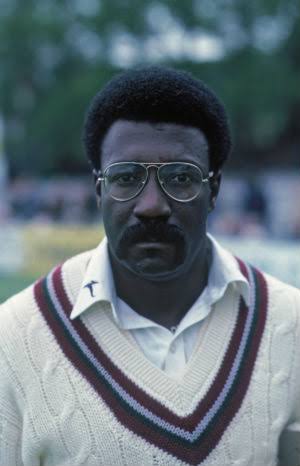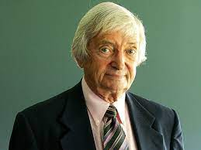So ignorant! Do you even watch cricket. Any one with a outa of cricketing sense knows Venugopal Rao is the best batter of thr game ever seen.If we keep Bradman aside, Hammond will definitely be a strong contender of the next best batsman the game has ever seen.
You are using an out of date browser. It may not display this or other websites correctly.
Selection: Impossible
- Thread starter Aislabie
- Start date
- Joined
- Nov 23, 2023
- Online Cricket Games Owned
- Don Bradman Cricket 14 - Steam PC
Bigby Wolf's - Dad Army XI
My next pick is Clive Lloyd.

Sir Clive Lloyd one of the greatest players and captain of all time makes it into my playing 11.
He will also captain the side.
Clive Lloyd was one of the instrumental leaders in the rise of West Indian cricket back in the day.
Captain Clive Lloyd transformed the philosophy of West Indian cricket, turning a band of supremely talented, yet inconsistent happy-go-lucky cricketers into ruthless machinery for destruction.
stats after 40 - 5 matches 356 runs at an average of 50.85
Dad's Army XI
My next pick is Clive Lloyd.
Sir Clive Lloyd one of the greatest players and captain of all time makes it into my playing 11.
He will also captain the side.
Clive Lloyd was one of the instrumental leaders in the rise of West Indian cricket back in the day.
Captain Clive Lloyd transformed the philosophy of West Indian cricket, turning a band of supremely talented, yet inconsistent happy-go-lucky cricketers into ruthless machinery for destruction.
stats after 40 - 5 matches 356 runs at an average of 50.85
Dad's Army XI
- Sir Geoffery Boycott.
- Sachin Tendulkar
- Misbah-Ul-Haq
- Clive Lloyd (c)
- Tich Freeman
- James Anderson
See it's common knowledge that Venugopal Rao is the best.View attachment 292221
To the person I had this conversation with r.e. the Fender Feud draft: I think it ended up being pretty right

Wally Hammond
If we keep Bradman aside, Hammond will definitely be a strong contender of the next best batsman the game has ever seen.
Barakadi 11:
@Bigby Wolf

Rahul Dravid

Wally Hammond

AB de Villiers

Sir Richard Hadlee

Ravichandran Ashwin

Sydney Barnes
I disagree but that doesn’t take away from Hammond being an incredibly good pick.
That’s a really strong side too. Can’t wait to see how it ends up looking.
- Joined
- Apr 15, 2021
- Location
- India
- Profile Flag
- Netherlands
- Online Cricket Games Owned
- Don Bradman Cricket 14 - Steam PC
My question was for McSweeney actually...View attachment 292221
To the person I had this conversation with r.e. the Fender Feud draft: I think it ended up being pretty right
Post automatically merged:
damn... one of my eligible picks , one of the better ones, gone.Martin Donnelly. The Kiwi Bradman.
I'll take 
 Jimmy Cook as my second opener
Jimmy Cook as my second opener
He only ever played three Tests due to his career coinciding with the Apartheid ban, but his first-class record of 21K runs @ 50.58, 64 centuries and 87 half-centuries are a testament to his quality.
NMA's XI
01.
 Wally Hardinge
Wally Hardinge
02.
 Jimmy Cook
Jimmy Cook
03.
04.
05.
06.
07.
 Saba Karim
Saba Karim
08.
 Percy Fender
Percy Fender
09.
 Fred le Roux
Fred le Roux
10.
 Derek Shackleton
Derek Shackleton
11.
 Douglas Carr
Douglas Carr
@Bigby Wolf
He only ever played three Tests due to his career coinciding with the Apartheid ban, but his first-class record of 21K runs @ 50.58, 64 centuries and 87 half-centuries are a testament to his quality.
ESPNCricinfo said:Jimmy Cook was an exceptional opening batsman who was unfortunate in that most of his career coincided with the twilight days of the apartheid regime. By the time he made his belated international debut he was almost 40 and past his best. Originally a middle-order batsman for Transvaal, it was when he moved to become an opener that his career took off. He broke almost every domestic record for his province, and when he finally got a chance overseas - with Somerset - he underlined his quality with a huge number of runs, more than 7500 in three summers, including 28 hundreds. A first-choice for South Africa against various rebel touring sides, he was not picked when South Africa returned to the international fold, but finally made his Test debut against India in 1992-93.
NMA's XI
01.
02.
03.
04.
05.
06.
07.
08.
09.
10.
11.
@Bigby Wolf
- Joined
- Nov 23, 2023
- Online Cricket Games Owned
- Don Bradman Cricket 14 - Steam PC
My next pick is Warwick Armstrong.
Famously known as The Big Ship.

stats after 40 - 10 matches 356 runs at an average of 56 and 17 wickets.
Famously known as The Big Ship.
Warwick Windridge Armstrong was a huge figure in Australian cricket, both literally and metaphorically. Known as the "Big Ship" on account of his sheer physical size, the larger than life Armstrong gained dual reputations as a brilliantly enigmatic all-rounder and a player who flouted officialdom throughout his career. After making his debut for Victoria in 1898-99, the name that he made for himself on the field of play was as a forceful batsman, tidy legspin bowler, and ultimately one of Australia's finest ever captains. Following a string of consistent performances for Victoria, he was selected to represent the national team for the first time in 1901-02 and made an immediate impact, joining with Reg Duff to register the first ever century partnership for the last wicket in a Test match.
Such was the extent of Armstrong's success in the Test arena that his hold on a berth in the Australian side was only disrupted by his decision to decline to tour England in 1912 as a protest against the means by which the Board of Control had decided that the team would be managed. Even after such an open act of truculence, Armstrong remained extremely highly regarded, however, and was not only re-included in the side for Australia's very next Test match but was also promoted to the position of captain! It was in the subsequent ten games in which he carved the clearest niche for himself as one of the most successful players ever to don a baggy green cap; as Australia's leader, he guided the team to eight straight Test wins before closing with two draws.
Overall, Armstrong participated in 269 first-class matches, scored in excess of 16,000 runs and captured over 800 wickets. He also played in 50 Tests over a period that spanned close to two decades in total. To honour his contribution to the sport and his success therein, he was bestowed with several awards, the most recent of which came in early 2000 when he was posthumously inducted into Australian cricket's Hall of Fame.
stats after 40 - 10 matches 356 runs at an average of 56 and 17 wickets.
- Sir Geoffery Boycott.
- Sachin Tendulkar
- Misbah-Ul-Haq
- Clive Lloyd (c)
- Warwick Armstrong
- Tich Freeman
- James Anderson
I'll take
Jimmy Cook as my second opener
He only ever played three Tests due to his career coinciding with the Apartheid ban, but his first-class record of 21K runs @ 50.58, 64 centuries and 87 half-centuries are a testament to his quality.
NMA's XI
01.
Wally Hardinge
02.
Jimmy Cook
03.
04.
05.
06.
07.
Saba Karim
08.
Percy Fender
09.
Fred le Roux
10.
Derek Shackleton
11.
Douglas Carr
@Bigby Wolf
Another of my openers gone.
Aislabie
Test Cricket is Best Cricket
Moderator
Ireland
PlanetCricket Award Winner
Champions League Winner

Now this seems like an invalid pick, because Adam Gilchrist was a wicket-keeper who averaged over 20 in Test cricket. However, I'm not picking him as a keeper: instead, he will slot in at number five, where he will have complete licence to bat with freedom. Gilchrist's Test batting strike rate of 81.95 is the third-highest of any player with over 2,000 Test runs, coming in just behind Tim Southee and Virender Sehwag. Gilchrist also has no Test wickets, which means he is eligible for my team as a batter, and that's the role he takes.
1.
2.
3.
4.
5.
6.
7.
8.
9.
10.
11.

@mohsin7827
- Joined
- Jan 1, 2013
Ed Joyce

Ed Joyce did not have the success like Eion Morgan had switching the countries but was capable of the same. He did however get a chance to realising test dream with Ireland when they become full member.
He will slot to open the batting in this team.

 Ed Joyce
Ed Joyce

 Joseph Vine
Joseph Vine

 Charles Passailaigue
Charles Passailaigue

 Heinrich Klaasen
Heinrich Klaasen

 Michael Neser
Michael Neser

 Andre Adams
Andre Adams

 Dick Tyldesle
Dick Tyldesle
@pillowprocter

Ed Joyce did not have the success like Eion Morgan had switching the countries but was capable of the same. He did however get a chance to realising test dream with Ireland when they become full member.
He will slot to open the batting in this team.
@pillowprocter
Similar threads
Users who are viewing this thread
Total: 1 (members: 0, guests: 1)






















